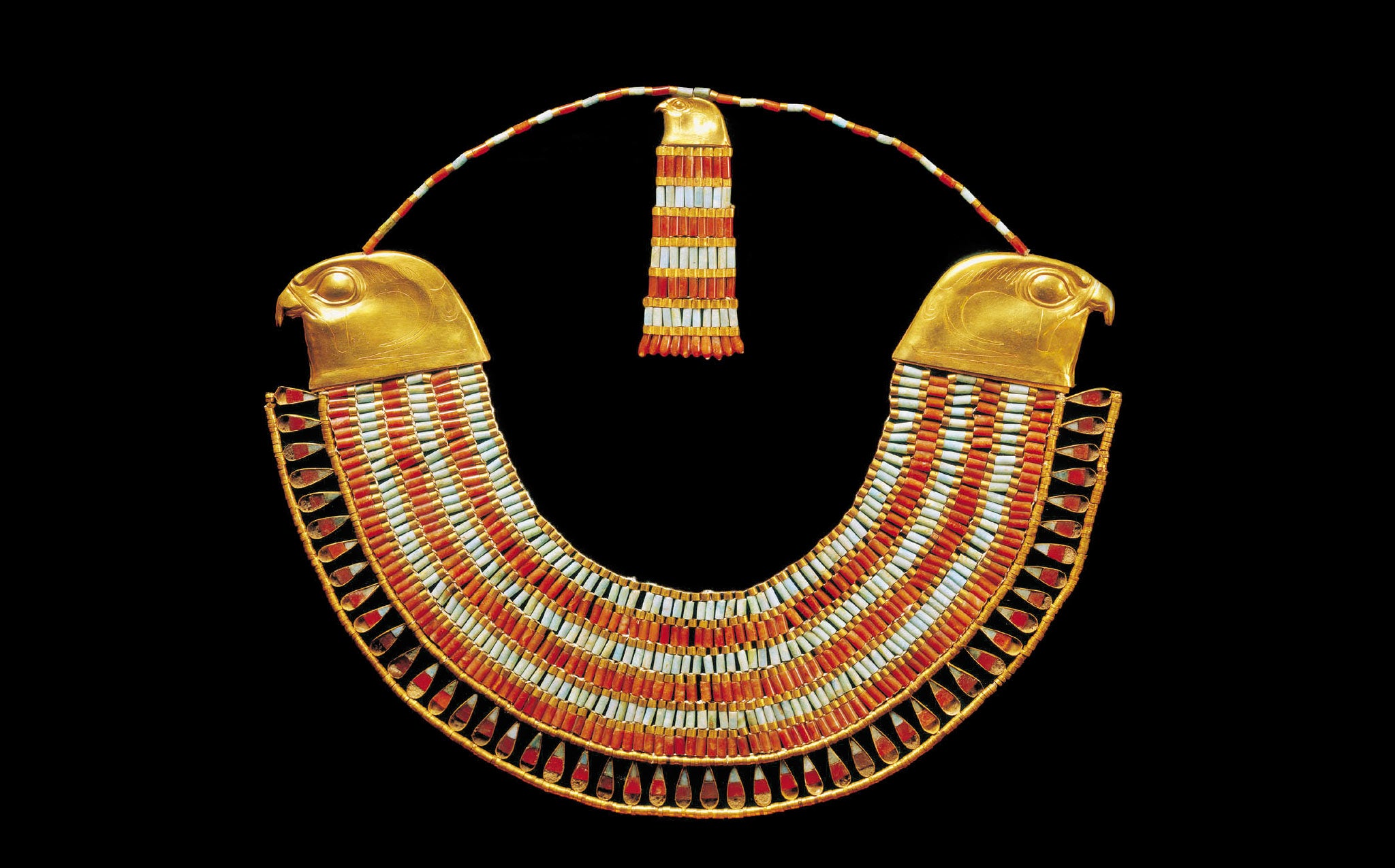The word jewelry is derived from the Latin word jocale which translates to plaything. But throughout history jewelry has not only been an extravagant bauble, but has had many functional and symbolic purposes.
Made from materials as varied as shells, bones, pebbles, tusks, claws, wood, precious metals, precious stones, pearls, corals, enamels, vitreous pastes, and ceramics, jewelry has been socially and culturally significant in almost every civilization. More than 85,000 years old, it has been used to denote membership in a group, to confer wealth and social status or political strength, as a form of currency, as a talisman of good fortune or a protector from evil, to hold clothes together and pin hair back, and as a form of artistic expression.
Many people attribute the birth of modern jewelry to have begun with the ancient Egyptians more than 5000 years ago. With more advanced technology than earlier civilizations and newfound access to precious metals and gems from bordering territories, Egypt became the leading force of jewelry production in the world. They discovered gold in vast quantities in their riverbeds and it’s during this time that the manufacturing of jewelry became a profession. Soft and easy to work with, gold became a symbol of wealth and luxury, and Egyptian nobles and royalty increasingly began to request rare and elaborate designs of gold and gemstones to confer their power and religion. The gemstones were each thought to hold unique powers that would be imparted to the owner when the pieces were worn. A few popular gemstones of the time were malachite, used to line the headdresses of pharaohs because it was thought to promote inner visions, carnelian, thought to purify the blood of the wearer and relieve back pain, and red jasper, believed to bolster libido and fertility.
Egyptian jewelry was one of the most sought after trade items in the ancient world and was widely distributed throughout Ancient Persia, Turkey, Greece and Rome. Dominating for about 2000 years, Egyptian design began to be replaced by Greek and Roman after Egypt was conquered by Alexander the Great in 332 BC.
Remarkably, fine jewelry making today still employs many of the same artisan techniques that it did in Ancient Egypt. Filigree, where the gold is pulled into wire and twisted into different designs, chasing and repoussé, a method of hammering one side of a flat sheet of gold to create a low relief on the other, granulation, inlaying, molding and engraving were all techniques devised and employed by the ancients.
